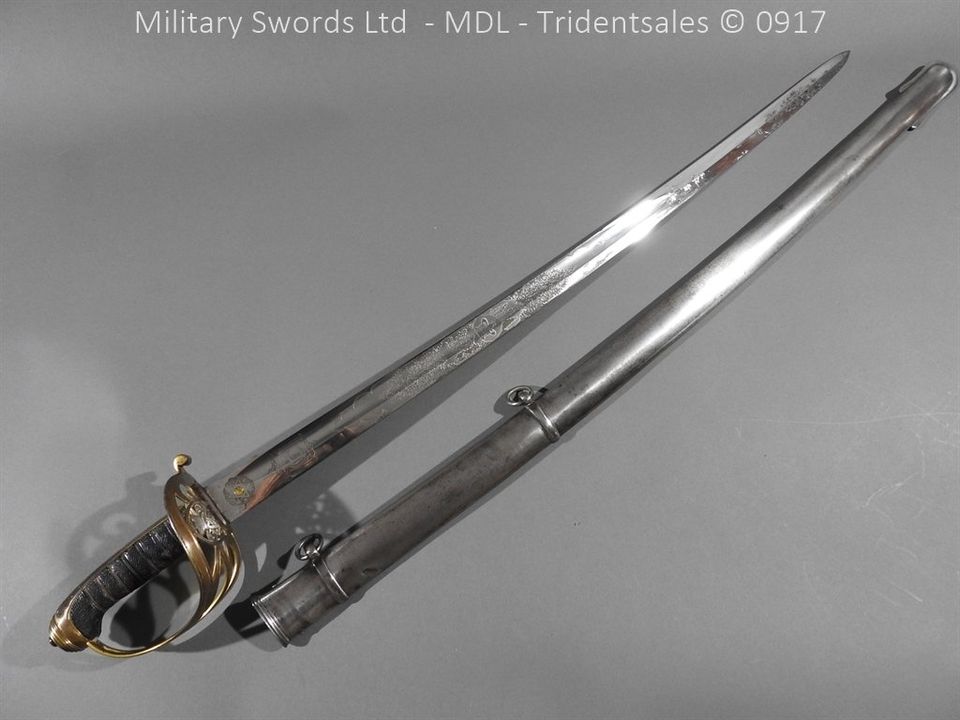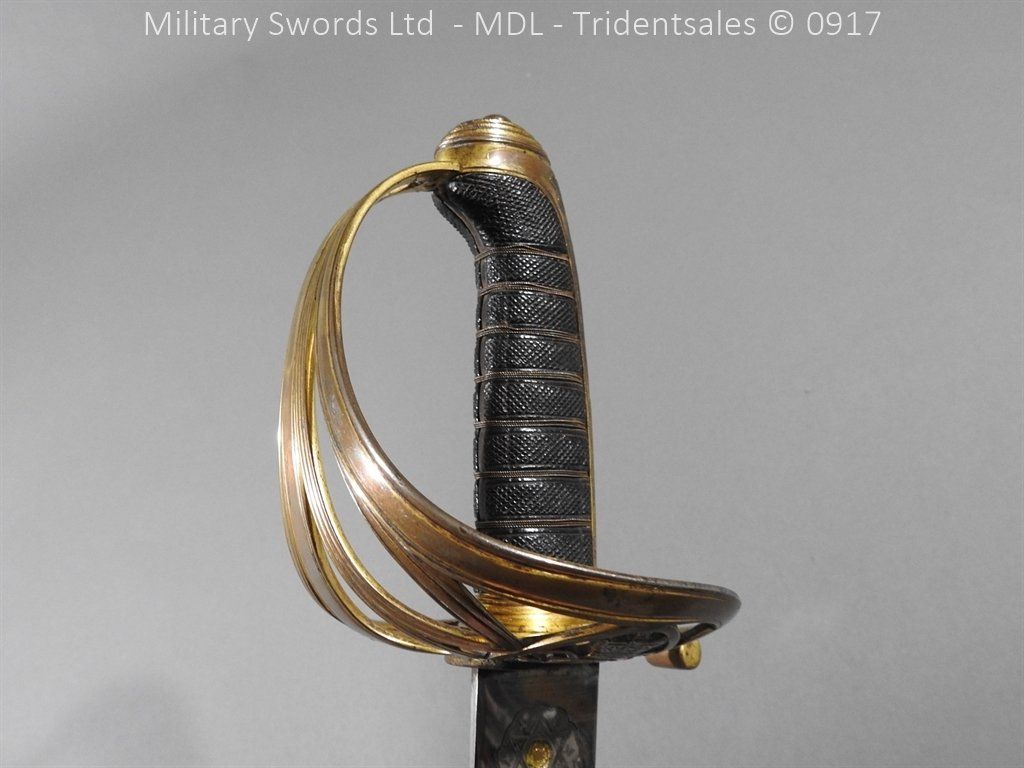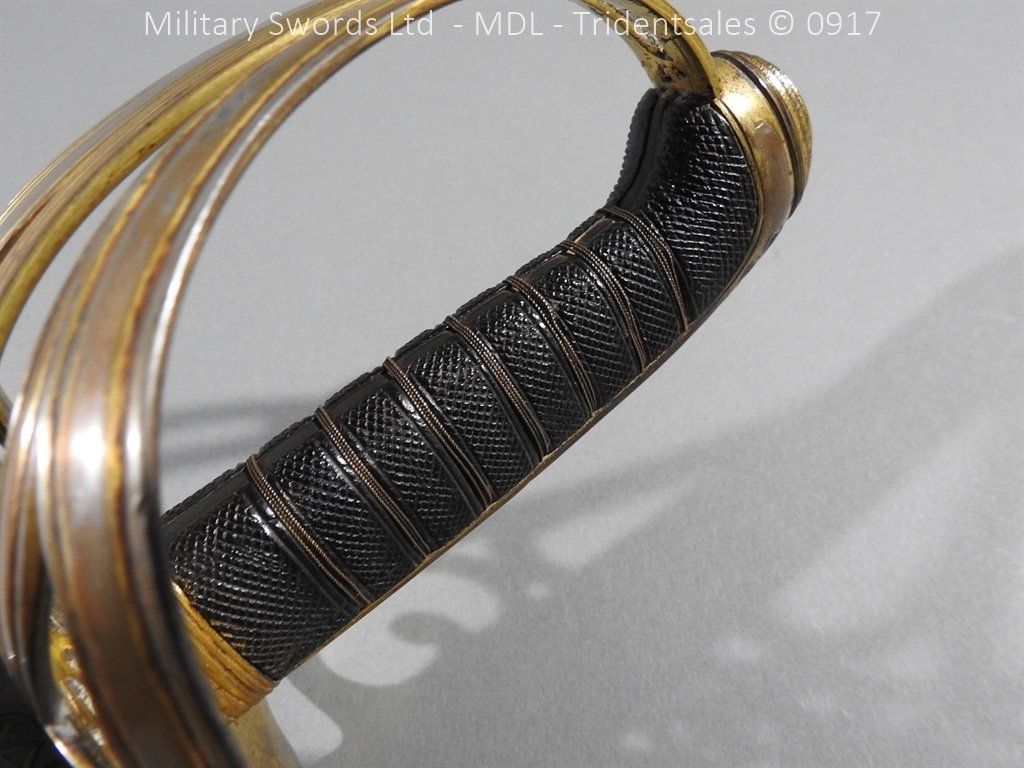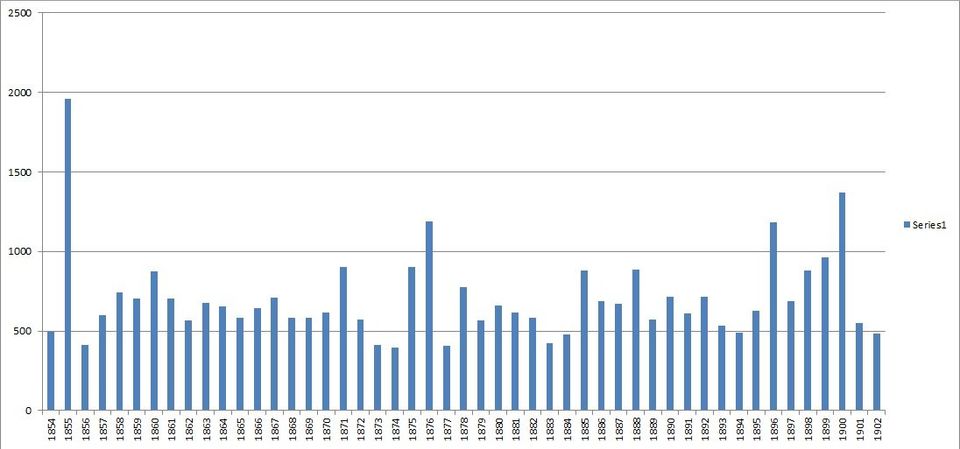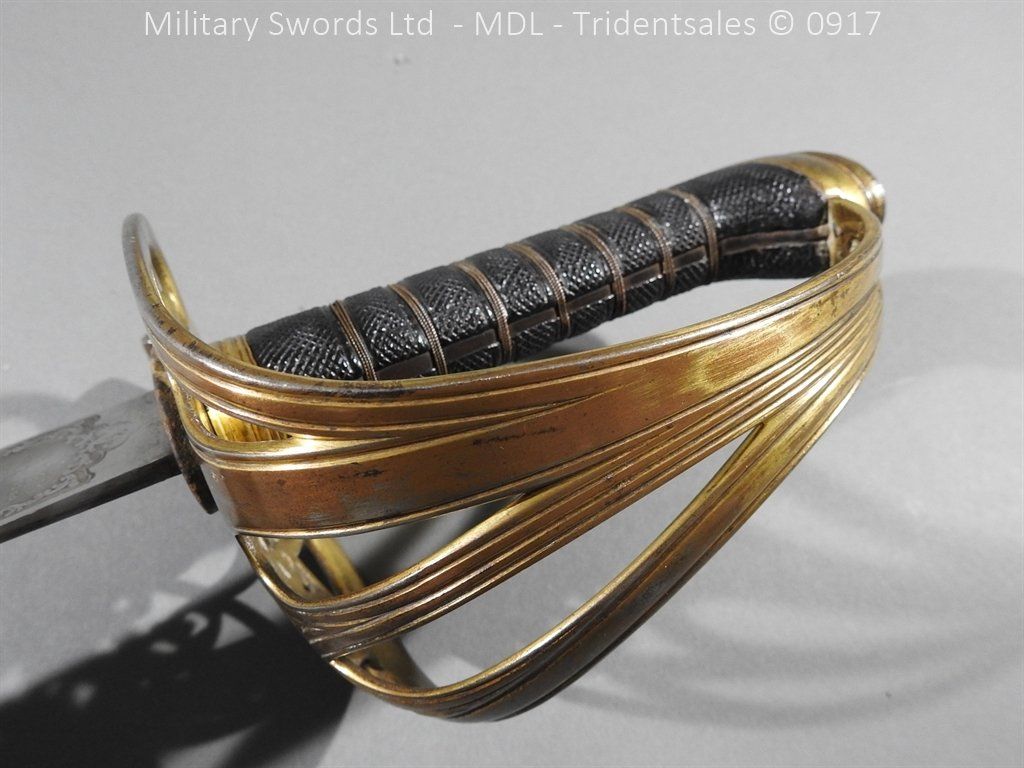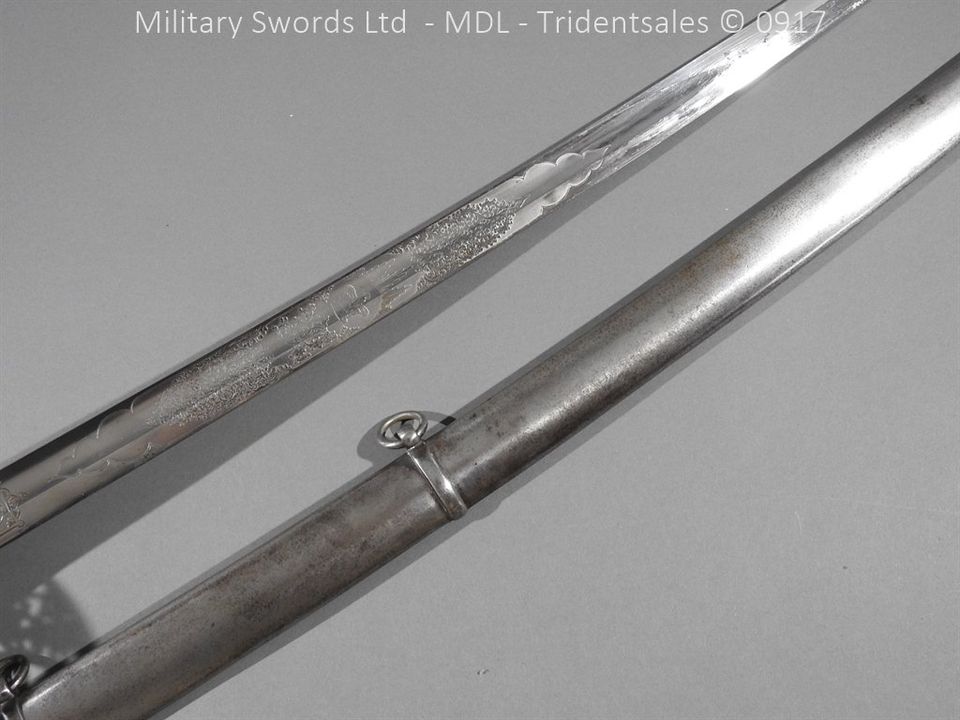An Important Early Numbered Non-Regulation Wilkinson SwordBy Matt Easton
An Important Early Numbered Non-Regulation Wilkinson Sword
By Matt Easton
Firstly I would like to convey my personal thanks to Bob Hedger of MDL/Tridentsales
for allowing me to use his photos here.
This sword appeared for sale on his website in mid-September 2017 and quickly sold (as I later found out, to a friend of mine).
I thought that it was important to document the sword publicly for researchers, because it is a historically important piece for students of British military swords and particularly for followers of Henry Wilkinson's work.
This sword is most significant for being numbered to the spine 5002. This means it was one of the very earliest numbered blades to come out of Wilkinson's workshops and this sword's record has been referred to in a few different publications and forums for one other important fact - it is the earliest recorded Wilkinson Patent Solid Hilt.
Experienced collectors will instantly know what that means, but for those who don't, I recommend you see my earlier article about Charles Reeves' patented hilt design in the Research section of this website.
Despite the sword's Wilkinson ledger record (pictured below) having been referred to in various places, it was assumed by most collectors that the sword itself no longer existed. Most swords have unfortunately perished with time. However, we can now see that the sword has survived and not only that - is in great condition.
Why is this sword so special?
1) Early number
2) Non-regulation design
Early Number
In 1854 the Wilkinson company decided to start numbering private purchase products. Henry Wilkinson had started making swords in the early to mid-1840s, having previously been a gun maker (which he also continued doing).
He published his 'Engines of War' (available in full on Archive.org) in 1841 and his 'Observations on Swords' in 1844 (available in full at SirWilliamHope.org), in which he expressed his intention from 1844 onwards to turn his attentions to sword production:
"Observations on Swords, &c., &c.
It is universally acknowledged that the manufacture of Swords was never at a lower ebb in this country than at present moment. Our officers returning from India can attest the numerous failures they have witnessed.
.......After so long a digression, I return to my principal subject, Swords, the manufacture of which I have studied for several years, and now propose to enter into fully, in connexion with my own business."
Henry Wilkinson's main innovation was to introduce a standard method for testing sword blades to 'proof' them fit for combat use, but he also redesigned the officer's regulation blade, moving away from the 1822 pattern pipeback designs and bringing in the new more-robust 1845 pattern blade for all services. More about this new pattern blade in my article on this website.
With Henry Wilkinson's new blade design becoming standard regulation for Army officers in 1845 and Navy officers in 1846 he had attained the top reputation for sword making and several of his innovations had to be imitated by other makers in order for them to stay in business and compete.
Wilkinson-made swords were more expensive than most other makers and purchase of a Wilkinson sword was partly a matter of taking the weapon seriously and partly a matter of prestige. Only a few other makers, such as Reeves, Pillin and Thurkle, were able to produce top end swords that could compete with Wilkinson.
In December 1853 the ageing Henry Wilkinson agreed with his protégé John Latham that the running of the company would pass to Latham. John Latham therefore took an increasingly active part in decision making within the company, which probably led to the instigation of the numbering system in January 1854. I would guess that this was Latham's own idea, given the dating convergence.
When the numbering system was introduced in 1854, it seems that the number 5000 was set upon as the estimated number of swords that had been produced up until that date. This seems plausible looking at the statistics, given that in most years they recorded between 500-750 swords per year and Wilkinson had been making swords in quantity since around 1844.
Since 1854 and until the company's closure at the end of the beginning of the 21st century, all Wilkinson private purchase swords were numbered and recorded.
Thankfully, these records mostly survive and are now accessible through Richard Milner of Arms Research as well as being stored at the Royal Armouries.
Unfortunately, not all the records show who a sword was sold to and there are certainly some errors in the records - I have one sword in my collection which is recorded, but the number is recorded wrongly by one digit. In a hand-completed ledger of this nature it is understandable that some errors and omissions crept in. Regardless, the record is a truly amazing resource that allows us to match many swords to individual officers and opens up a whole field of research that would be otherwise closed to us.
Looking at the table above it is generally notable that in most years between 1854 and 1870 Wilkinson recorded around 500-750 swords produced annually.
The spike in 1855 is very notable and is almost certainly associated with the Crimean War, which drew in an abnormally large chunk of Britain's armed forces. Officers in some cases bought new swords when going on campaign, sometimes they needed or wanted new swords during the campaign (due to loss, damage or wanting a better weapon), and in many cases officers bought new swords when returning from a campaign.
This last factor is notable in many of the swords in my own collection and in the cases where I have researched seems to have been because the swords they took on campaign with them became damaged and unpresentable in some way. In one case the Wilkinson-ordered sword was replacing an earlier one of unknown maker which had broken on a Russian officer's head at Sebastopol in 1855!
Swords produced in 1854 are therefore quite rare survivors now and generally speaking the further back in date we go, the fewer swords survive now. Early Wilkinsons are rarer than later Wilkinsons. Pre-numbered Wilkinsons (dating to c.1844-1853) are the rarest of all.
Non-Regulation Design
The other significant thing to note about this sword is its design. At first sight it appears to be a standard regulation infantry officer's sword, of 1845 pattern. However, while it conforms generally to the regulation requirements, it has three distinct features intended to make it a better fighting weapon:
1) Patent Tang
2) Steel Guard
3) Blade Proportions
The most obvious improvement is the 'patent tang' (a tang which is the full width and shape of the grip) as it is described in the Wilkinson ledger above and shown below. The patent in question was Charles Reeves's patent of 1853, which either Henry Wilkinson or John Latham seem to have negotiated some licence to use very soon after its introduction.
Given that this example dates to January 1854, as soon as numbering began, we can presume that they had started using this hilt construction for special order swords prior to 1854. Presumably they had to pay a small fee to Reeves in order to use the patent design, but we do not have records of this agreement surviving.
Some other companies did also use this design and at least one other, Pillin of London, also obtained the right to refer to the patent on their blade etching. However, to collectors of antique swords now, it is Wilkinson who have become most associated with the Patent Solid Tang, simply because it seems to have been Wilkinson that made them in the greatest numbers (and therefore have the most survivors to collect). Also, in the end, Wilkinson bought out all their rivals, including Reeves and Pillin, and continued producing the Patent Solid Hilt as an optional extra on their officers' swords until WW1.
The next innovation to note is that rather than the standard brass guard with hinged folding inner section, the guard here is gilt steel, with "no fall down", as noted on the ledger record.
This was a costly extra option for infantry or later Engineers officers, as it was significantly more work to form a steel guard by cutting and filing than to cast a normal brass one.
However, the steel guard of course offered better protection and John Latham himself pointed this out in his 1862 lecture, noting that brass guards were sometimes destroyed by a strong blow from something like a tulwar.
The 'fall down' or folding inner flap to the guard on the brass hilt (intended to make them more comfortable to wear) was acknowledged as a weak point in actual field use and the feature was abandoned almost universally by around 1860. Where a pre-1860 infantry officer's hilt is made of steel instead of brass, the folding section is almost always abandoned in favour of a solid guard, as in the steel 1827 pattern Rifles officers' swords.
These infantry steel hilts continue to turn up as an optional extra on infantry officer's swords right the way through until steel hilts were made regulation in 1895, however because the regulations until 1895 stipulated a gilt hilt, the steel hilts had to be gilded as seen here.
Where the gilding has rubbed, you can observe the steel coloured surface showing through. This is usually most evident on the backstrap, as shown here, and on the outer edges of the guard. Gilding is most protected on the inside of the guard and on these steel-hilted variants that is where the gilding is most likely to survive. On some examples the gilding is lost entirely and only a steel surface remains.
The final non-regulation feature to note is the blade. It is unusually large for an 1845 pattern infantry officer's blade.
The standard infantry size was 32 1/2 inches long by 1 1/8 inches wide at the base of the blade. This blade, as noted in the ledger, is 33 1/2 inches long and 1 1/2 inches wide. The extra length on the blade is not particularly abnormal - many infantry officers' swords varied from about 32-33 1/2 inches, with some being 34 1/2 inches or on rare occasions even longer. However the width is very notable.
While standard infantry officers' swords were 1 1/8 inches, cavalry were 1 1/4 inches. At 1 1/2 inches this is really a broad blade for the time and especially on an infantry officer's sword. It gives the sword almost the proportions of a naval cutlass of the period and would have increased the cutting power of this sword notably.
One curiosity of the ledger entry is that it records a "solid blade". In Wilkinson records this normally refers to an un-fullered blade, also recorded as a 'flat solid' blade, but we can see here that the blade is in fact the 1845 pattern type, with a normal fuller.
The officer choosing this design obviously had strong opinions about swords. This sword is more specialised to increase cutting power, hand protection and overall robustness. Similar design features found to be often associated with Indian or other colonial service, where sword combat might be more likely.
Special thanks to Bob Hedger of MDL/TridentSales
for allowing me to use his photos for this article.
Copyright Matt Easton 2017

